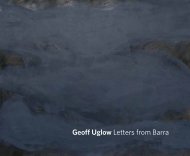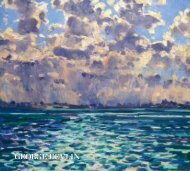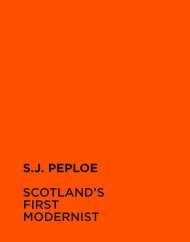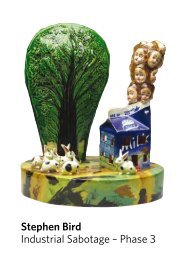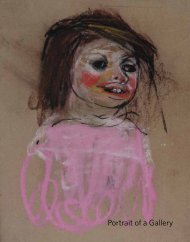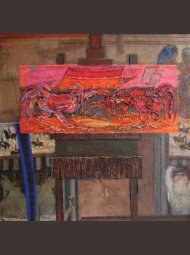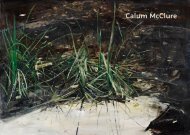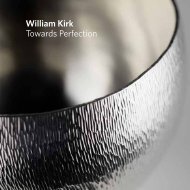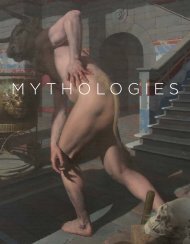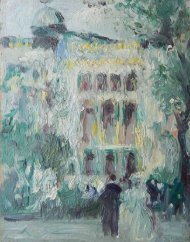Download a PDF of the exhibition catalogue - The Scottish Gallery
Download a PDF of the exhibition catalogue - The Scottish Gallery
Download a PDF of the exhibition catalogue - The Scottish Gallery
Create successful ePaper yourself
Turn your PDF publications into a flip-book with our unique Google optimized e-Paper software.
Peploe began to visit <strong>the</strong> south-west <strong>of</strong> Scotland during <strong>the</strong> First War no doubt with <strong>the</strong> encouragement <strong>of</strong> his friends<br />
Jessie King and EA Taylor who had settled <strong>the</strong>re in 1913. He came to paint but also to get fit; he was not to be deemed<br />
fit for War service but was continuously expecting to be called up. <strong>The</strong>re is no precise record <strong>of</strong> his visits and <strong>the</strong> dates<br />
on <strong>the</strong> back <strong>of</strong> some <strong>of</strong> his panels may well have been written on some years later and are not entirely reliable. One<br />
<strong>of</strong> his most productive locations was on <strong>the</strong> Solway Firth at Douglas Hall, which overlooks Sandyhills Bay and <strong>the</strong> land<br />
inland towards Laggan Farm.<br />
He worked exclusively at this time on panels for which he had a transportable painting box so that he could<br />
walk over rough, farming terrain to find his subjects. Trees Douglas Hall, (New Acquisitions, <strong>The</strong> <strong>Scottish</strong> <strong>Gallery</strong>, 2008)<br />
will belong to an earlier visit, perhaps <strong>of</strong> 1915 and is fauvist in character while work made on <strong>the</strong> next visit, most likely<br />
in <strong>the</strong> summer <strong>of</strong> 1917, have a more lyrical, naturalistic quality. Cornfield, Douglas Hall and Laggan Farm Buildings, (both<br />
Glasgow Museums) are typical. Peploe is now using a gesso ground and thinned paint, with some oil taken out with<br />
blotting paper from which is derived a dry surface and an extraordinary almost luminous brightness.<br />
Our picture entitled Douglas Hall is in fact Laggan Farm, seen from <strong>the</strong> back. <strong>The</strong> landowner was <strong>the</strong> Haslam<br />
family, likely friends <strong>of</strong> Jessie King who would have welcomed <strong>the</strong> artist onto <strong>the</strong>ir property. Peploe is attracted to <strong>the</strong><br />
strong architectural lines <strong>of</strong> <strong>the</strong> house (he also enjoyed <strong>the</strong> stolid geometry <strong>of</strong> Kirkcudbright’s Tolbooth in several works<br />
also belonging to 1917) and <strong>the</strong> light on <strong>the</strong> whitewashed facade is captured in a white as brilliant as any he painted.<br />
At this moment he seems closer to Paul Cézanne than at any o<strong>the</strong>r; <strong>the</strong> attraction to great trees, <strong>the</strong> rusticity <strong>of</strong> his<br />
subject choices and analysis <strong>of</strong> form all owe a debt to <strong>the</strong> master <strong>of</strong> Aix. But as always with Peploe <strong>the</strong> sheer virtuosity<br />
<strong>of</strong> painting and originality <strong>of</strong> his colour transcend any influences.<br />
68



